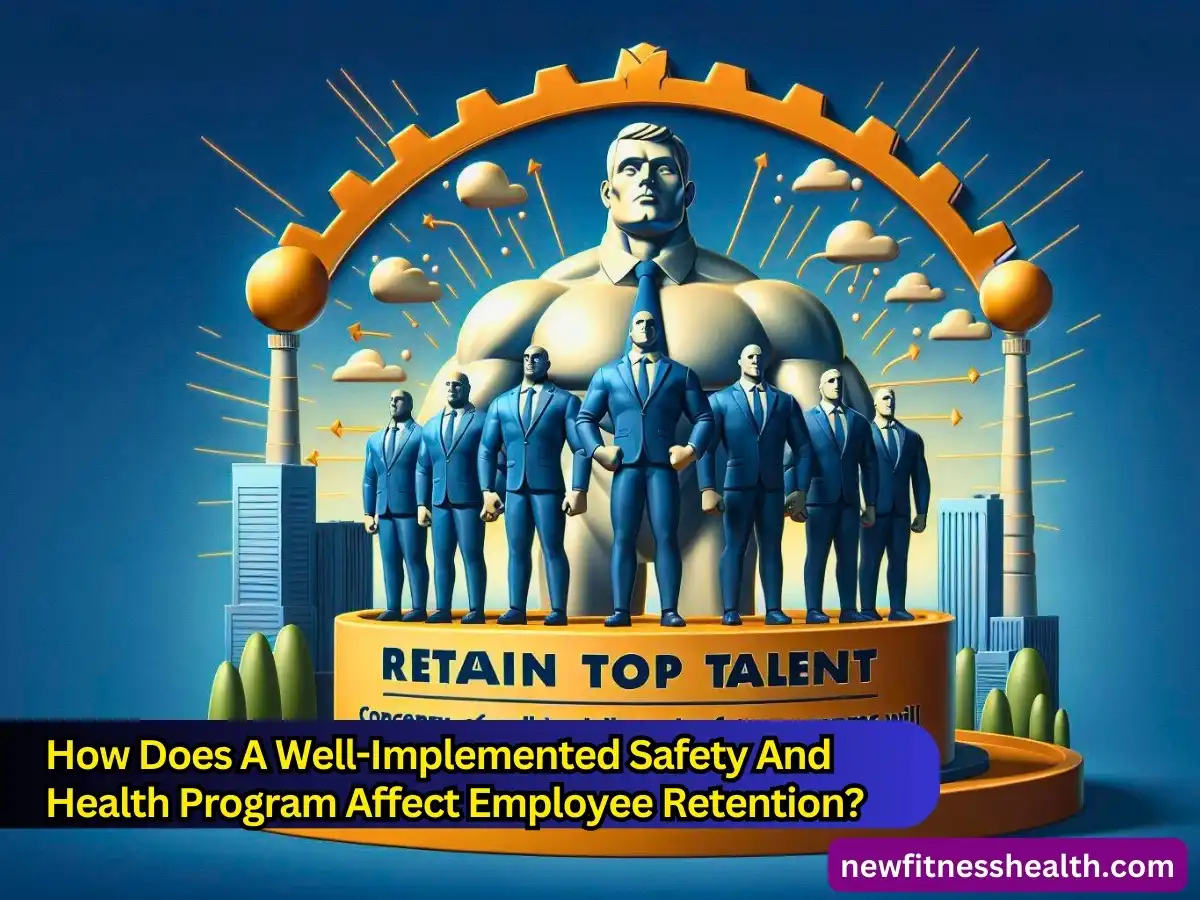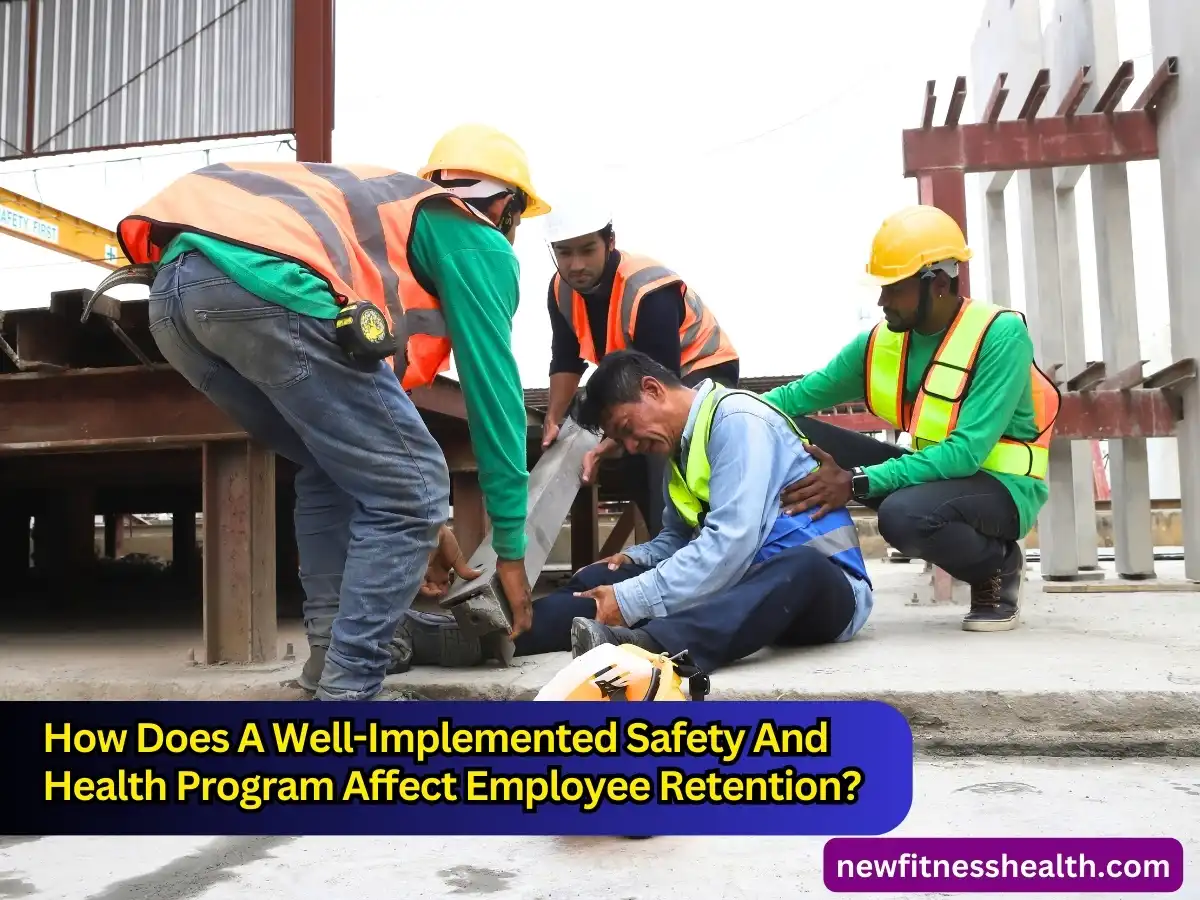Discover How Does A Well-Implemented Safety And Health Program Affect Employee Retention? And fosters a committed workforce. Click to learn the key benefits!
Can you imagine walking into a workplace with vibrant air and employees who are all focused, active, and safe? This is not a dream of an ideal world; it happens in organizations where safety and health programs are not only implemented but ingrained in the entire culture of the company.
How does a well-implemented safety and health program affect employee retention? It is what helps retain top talent, cultivates loyalty, and builds an energized work environment.
In such organizations, compliance is secondary to safety for its sake as well as that of others. How does a well-implemented safety and health program affect employee retention? Because people matter more than anything else to this company.
It is through this dedication to wellness that job satisfaction of the employee can be achieved while retaining them. As we dig deeper into these transformative programs’ significance, one incontestable truth emerges.
How does a well-implemented safety and health program affect employee retention? By generating positive outcomes that result in undying loyalty from employees besides propelling businesses to unprecedented heights.
Here’s how we can turn this vital link around while unveiling an impregnable workforce.
The Foundation of Safety in the Workplace
A robust safety and health program lies at the center of every thriving business, a protective guide to workers’ welfare. Safety is not just a policy but the reason upon which job satisfaction and employee retention are built.
When employees feel safe enough, their dedication hardens and efficiency increases. Such programs, well implemented in health and safety, become a landmark for any organization’s commitment to its most valued asset, i.e., people who work for it.
Reflecting that this organization cherishes life more than just mere output. When such a program is infused with care, trust, prevention, awareness, and engagement, it becomes the backbone of a culture where every employee feels respected and protected.
It is the point at which safety transcends compliance to become a shared value—a common language spoken across workplace corridors. Therefore, what changes from mere retention into deeper bonding is how well-implemented safety and health programs create belongingness?
The answer is simple yet profound. Instead of being considered as a cost, an effective safety & health program should be viewed as an investment in people and peace of mind.
It promises one thing – that all workers return home safe each day to their families, knowing that their employer values their lives above everything else. This is how a well-implemented safety and health program affects employee retention, through maintaining an atmosphere where safety is as natural as breathing itself.
Or inherent like lungs functioning properly. Here’s how we can turn this vital link around while unveiling an impregnable workforce.

The Cost of Neglect – When Safety Takes a Backseat
Neglecting the workplace disturbs safety, and with it, the motivation of employees comes down. The figures aren’t just numbers; they are footsteps fading away and silent resignation letters piled up in a shrinking population seeking safer harbors.
These are not simply oversights on safety procedures; they are betrayals of trust that chip at employee loyalty. Grimly, case studies spanning sectors indicate that poor safety precautions lead to increased labor turnover rates.
An organization is not created by its tools; rather, it is its staff who are vital components that have to be protected from harm at all costs. A safety and health program well implemented is not just like a routine checkup—it links the workers with their jobs as well as guaranteeing them of their wellbeing above all else.
How does a well-implemented safety and health program affect employee retention? It does this powerfully by showing that the company doesn’t just need staff to come to work—it demands them to succeed in whatever they do, go home safe daily with their dignity intact.
When these protocols for worker’s protection are strong and training programs go beyond superficiality, employees take note of that fact. They do not leave. They speak about a workplace characterized by compassion, security, and respect for human life outside balance sheet lines.
Henceforth we see what neglect actually costs – not in numbers but rather trust which is the foundation stone upon which all worker retention is based upon. Here’s how we can turn this vital link around while unveiling an impregnable workforce.
The Morale Booster – Safety Programs as Retention Tools
They are not just policies; they are the backbone of a company’s culture, the confidence that we have in doing our daily tasks. A well-done safety and health program becomes a morale booster and retention tool more than any other benefit given.
Instead of speaking words, it does so through unspoken actions implying ‘we care about you’ people rather than employees. The giant tech firm Apple stands out as an example for its internal awards which reward innovativeness and hard work.
Google is a remarkable case as it provides holistic wellness initiatives that aim at maintaining a healthy workforce. These corporations discern that safety and health programs involve much more than accident prevention since they need to create places where employees feel genuinely looked after.
How does a well-implemented safety and health program affect employee retention? It does this by creating security and affinity among workers.
Employees do not move from those organizations that they consider safe for their wellbeing. They continue being faithful to firms which provide training on how to maintain security, mark safety anniversaries while making each member of the group feel part of something bigger.
In sum, having a finely implemented system of health and safety at work is like saying what an organization is all about, showing love for humanity, and ensuring better future days in life (Delpo 4).
In the long run, firms leading by example are able to hold on to their best staff but also attract competing ones because performance will be their magnet—a place where everybody’s welfare matters first before anything else including security awareness.
Beyond Compliance – The Ripple Effect of Safety on Retention
A company’s culture depends on safety in the workplace more than just a checklist or a bunch of regulations; it is the lifeblood, that trust that ties employees to their employer. If safety programs can move beyond mere checklists and regulatory requirements, they will have an impact throughout the organization by way of increased engagement, loyalty, and improved morale.
A well-implemented safety and health program says a lot about the values of a company, revealing its dedication to its personnel’s welfare above legal norms. How does employee retention benefit from having a well-implemented safety and health program?
It does this through creating an atmosphere where employees feel valued and cared for as far as their health and safety is concerned. By thus promoting security within the entity, it helps in making workers more inclined to remain with it while contributing positively towards its growth.
Furthermore, when employees see their employers investing in their own well-being at work, they get a sense of attachment and gratitude to them. This not only raises their spirits but also makes them want to re-invest into the firm leading itself into a virtuous circle of output–related job satisfaction.
A well-run Safety & Health Program is basically one among many different methods of improving retention of staff. Employees do not just go to work; rather they come to places where they are taken care of, esteemed as humans, and proud of being associated with them.
This is how safety affects retention – like a ripple effect which carries companies forward into the future where all individuals thrive together in one place. Here’s how we can turn this vital link around while unveiling an impregnable workforce.
The Numbers Speak – Statistical Evidence Linking Safety to Retention
The statistics speak for themselves: safety is not just important, it is a major retention factor. Figures from all industries actually indicate that a strong safety and health program attracts loyalty and guards against the huge expenses of turnover.
When there are good safety protocols in place, employees do not only stick around but thrive. They become champions of a workplace that respects their life as much as their work.
How does the implementation of a good security and health system affect employee turnover? It fills trust in workforce members.
Workers must be aware that they should always be safe, healthy at all times without any compromise on this point. This sense of assurance represents an unsaid vow to continue working for more than wages, which in turn keeps them employed.
This research confirms: companies with thorough safety programs have fewer cases of employees being terminated. They know that safety speaks love, and confidence is its currency.
This isn’t about meeting the minimum – it’s about leading the way. How does a well-implemented safety and health program affect employee retention?
By demonstrating that safety is not part of the cost of doing business but rather one where men take their stand against risk—in other words, dedication to each individual’s welfare when he or she enters through those doors.
In fact, this numerical symphony glorifies caution; whereby the figures blend with stories fortifying endurance and faithfulness in organizations. Here’s how we can turn this vital link around while unveiling an impregnable workforce.
Conclusion:
Ultimately, the evidence is irrefutable: an effectively executed safety and health program is a key in retaining top people. It’s a compass that leads businesses to the future where employees don’t just perform their official duties but enjoy working life at large.
Many people consider such programs as mere formalities, but they are not; they are the umbilical cords of trust and commitment that connect employees to employers. How does a well-implemented safety and health program affect employee retention?
By creating a safe workplace environment, it will always ensure that every worker is taken care of well. This investment in employee health is an expression of the kind of values upheld by companies which deeply resonate with its employees.
Remember organizations: You need to invest in full safety and health programs without any compromise because it will be useful for long term development. These strategies play an integral role when it comes to ensuring that business has dedicated, active, and contented staff.
Thus, let’s go beyond compliance; let us make rules. Let’s not only keep human capital but also grow them properly.
Because a well-implemented safety and health program for the purpose of employee retention isn’t only part of the equation – it is the equation itself! Here’s how we can turn this vital link around while unveiling an impregnable workforce.

Frequently Asked Questions Of How Does A Well-Implemented Safety And Health Program Affect Employee Retention?
Q1: What’s the ROI of Safety Programs?
Ans: Indeed, safety and health programs play a direct role in worker retention with high return on investment (ROI). This can be said by the fact that companies that focus on such programs always have reduced employee turnover translating into less cost incurred for hiring and training new ones thereby improving the company’s profits.
Q2: Can Safety Increase Job Satisfaction?
Ans: Right. A well-executed safety and health program raises job satisfaction since employees feel valued and secure in their jobs. Consequently, this emotional capital breeds loyalty and improves the likelihood of long-term retention thus making it clear that safety is indispensable to retention.
Q3: How Does Safety Shape Company Culture?
Ans: Safety and health programs are at the heart of a positive corporate culture. They show that an organization cares for its people, promoting trust and a sense of community which are vital ingredients for keeping top notch staff members or a committed workforce intact.
Q4: Do Safe Workplaces Attract Top Talent?
Ans: Of course they do. Safety-mindedness attracts talented candidates who desire stable careers. In essence, one way through which workers can be retained entails implementing good safety measures in work places leading to workers perceiving the employer as their preferred employer in comparison to others in the same field.
Q5: Is Safety Linked to Employee Engagement?
Ans: Employee engagement cannot stand apart from safety. An engaged workforce is one that feels safe on duty hence delivering expectations accordingly hence an effective safety-net programme is critical to prevent loss of both output as well as manpower.



















